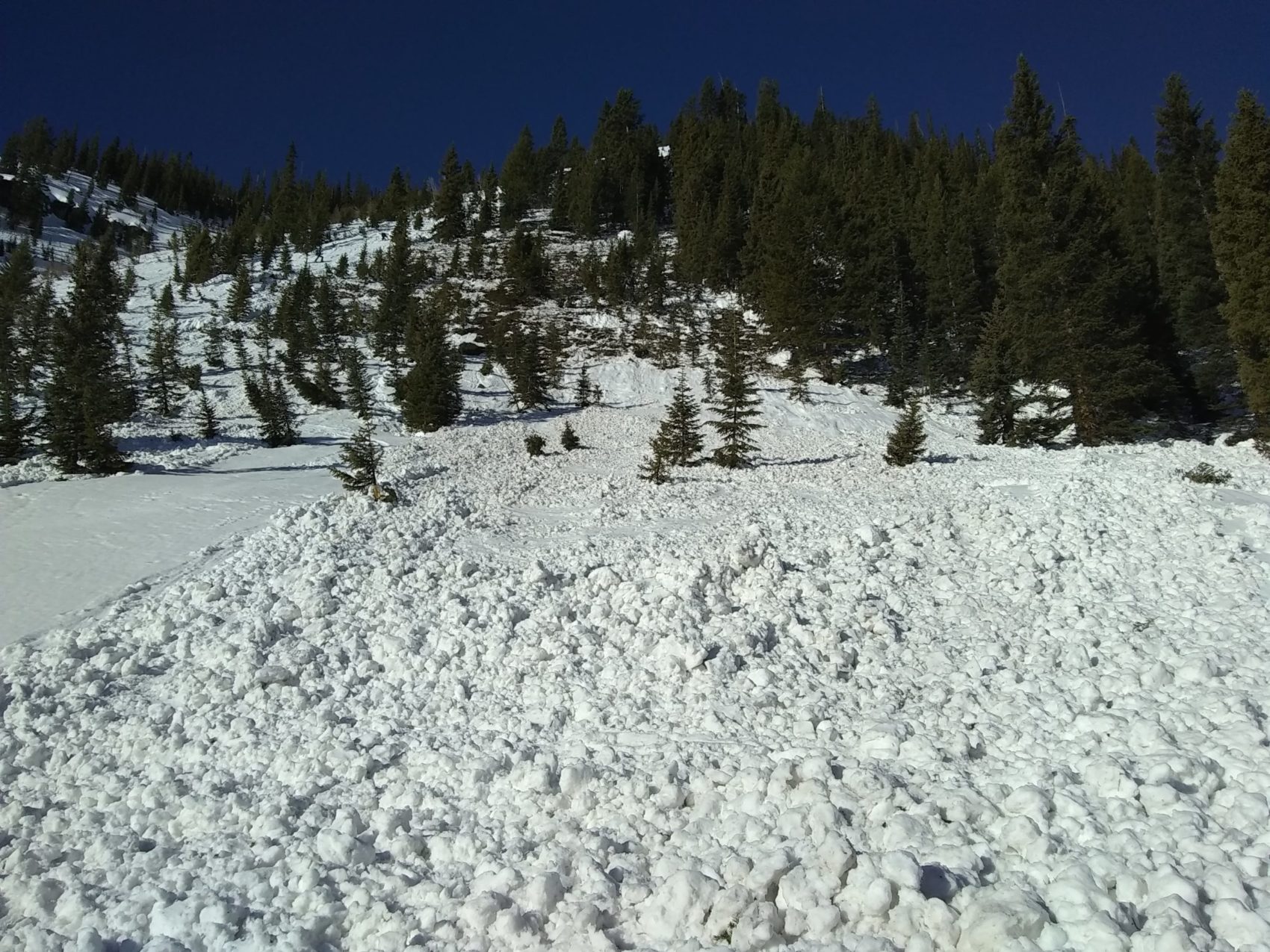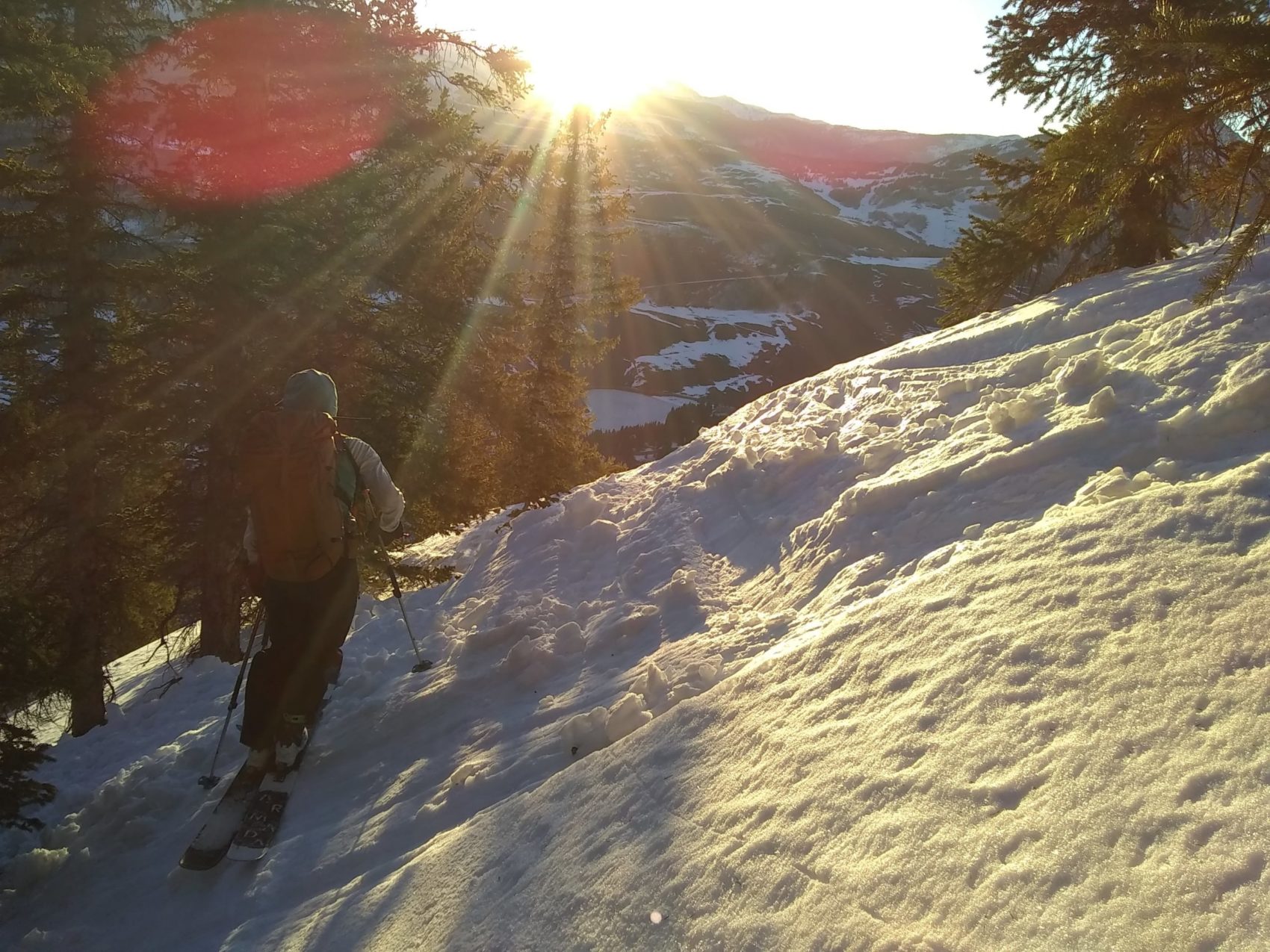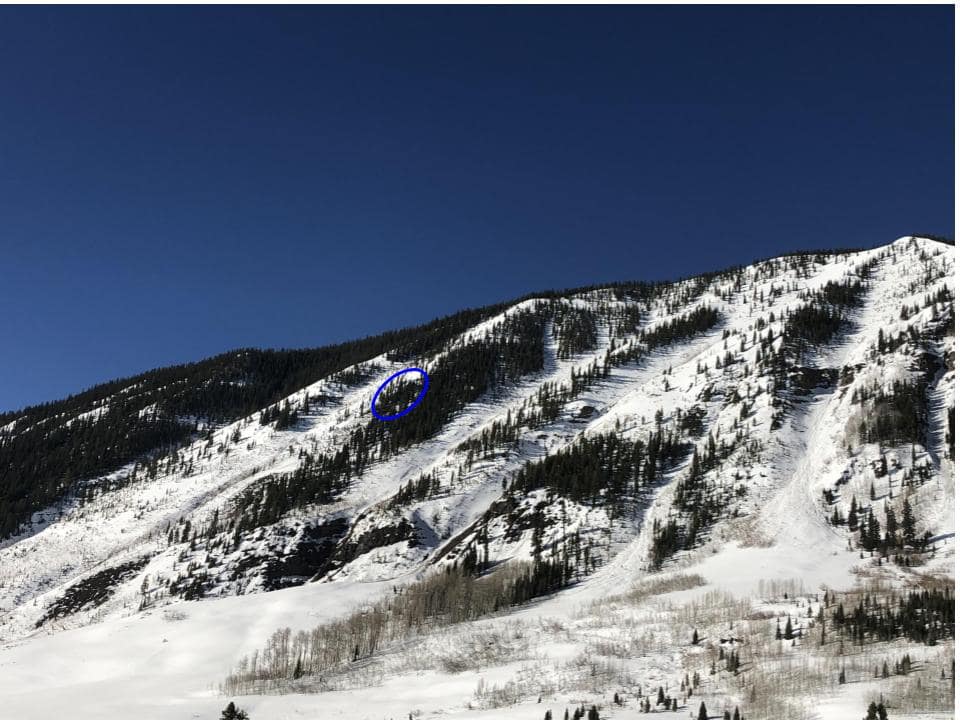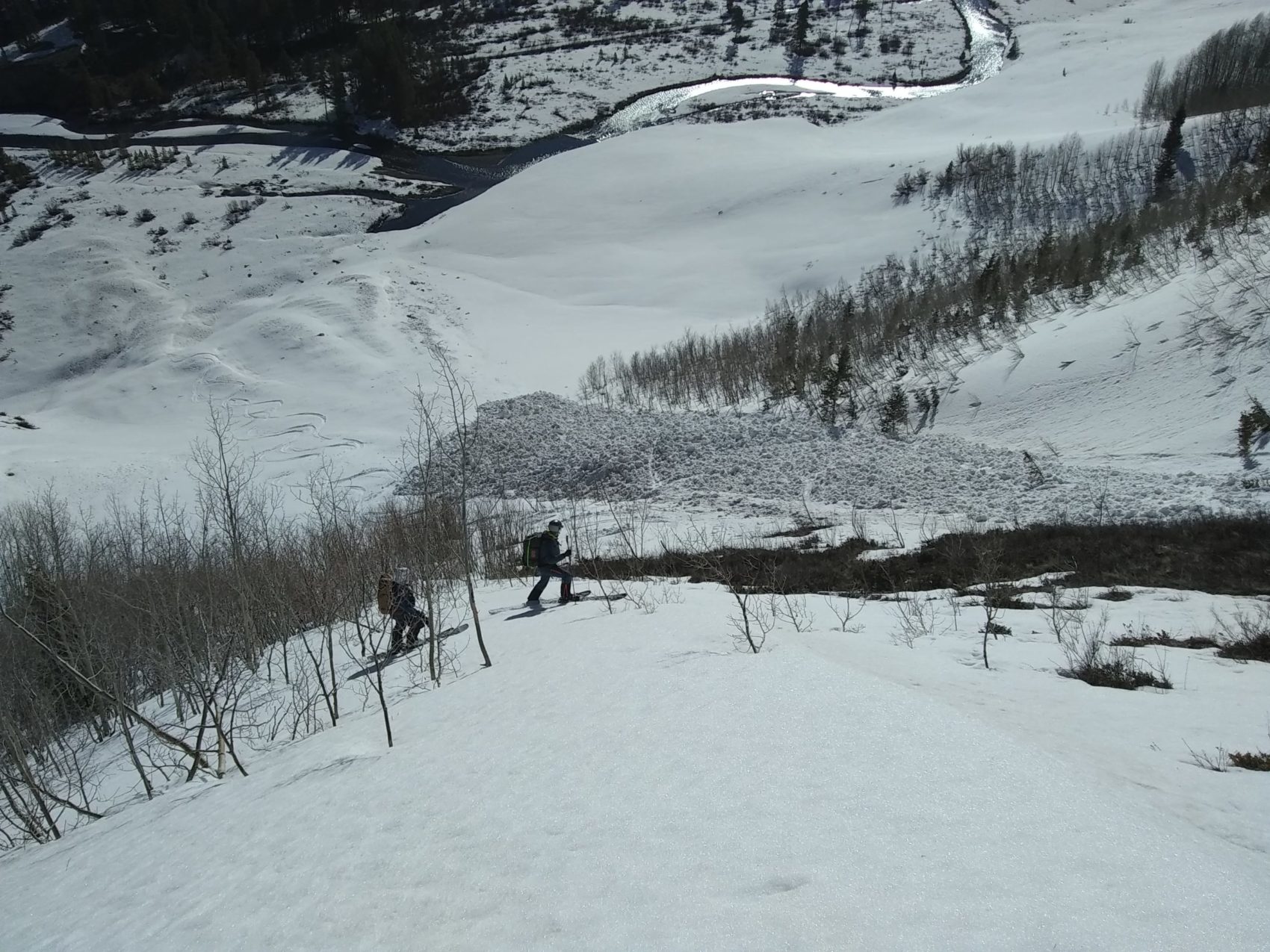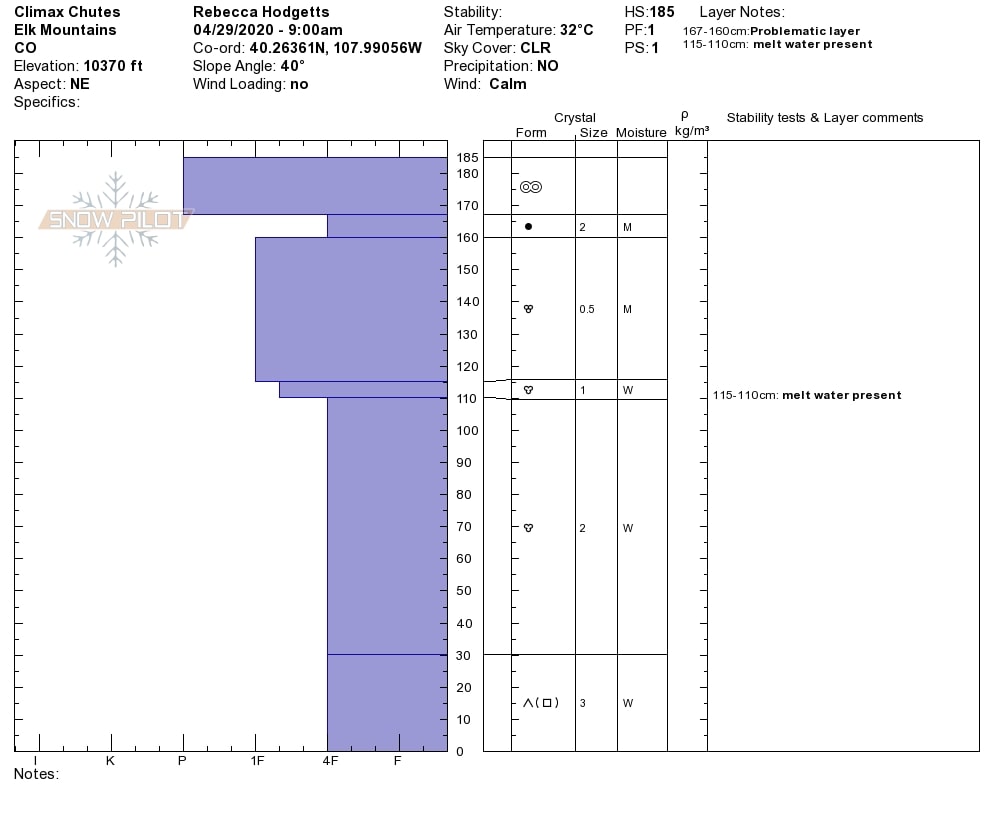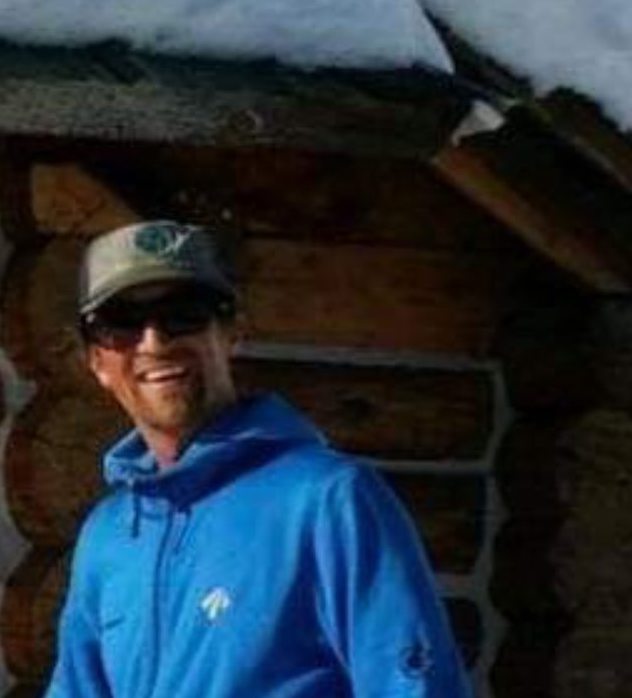
The CAIC just released the full report of the avalanche that took the life of a beloved Crested Butte resident on 28th April 2020. A man in his 40s, later identified as local mountain guide Dan Escalante, was caught in an avalanche on Tuesday morning while skiing the Climax Chutes and succumbed to his injuries sustained from the slide.
- Related: Local Man Killed in Crested Butte, CO Avalanche Identified as Former Councilman and Mountain Guide
There have been 31 avalanche related deaths in North America this winter, 23 in the USA, and 8 in Canada.
Full report from the CAIC below:
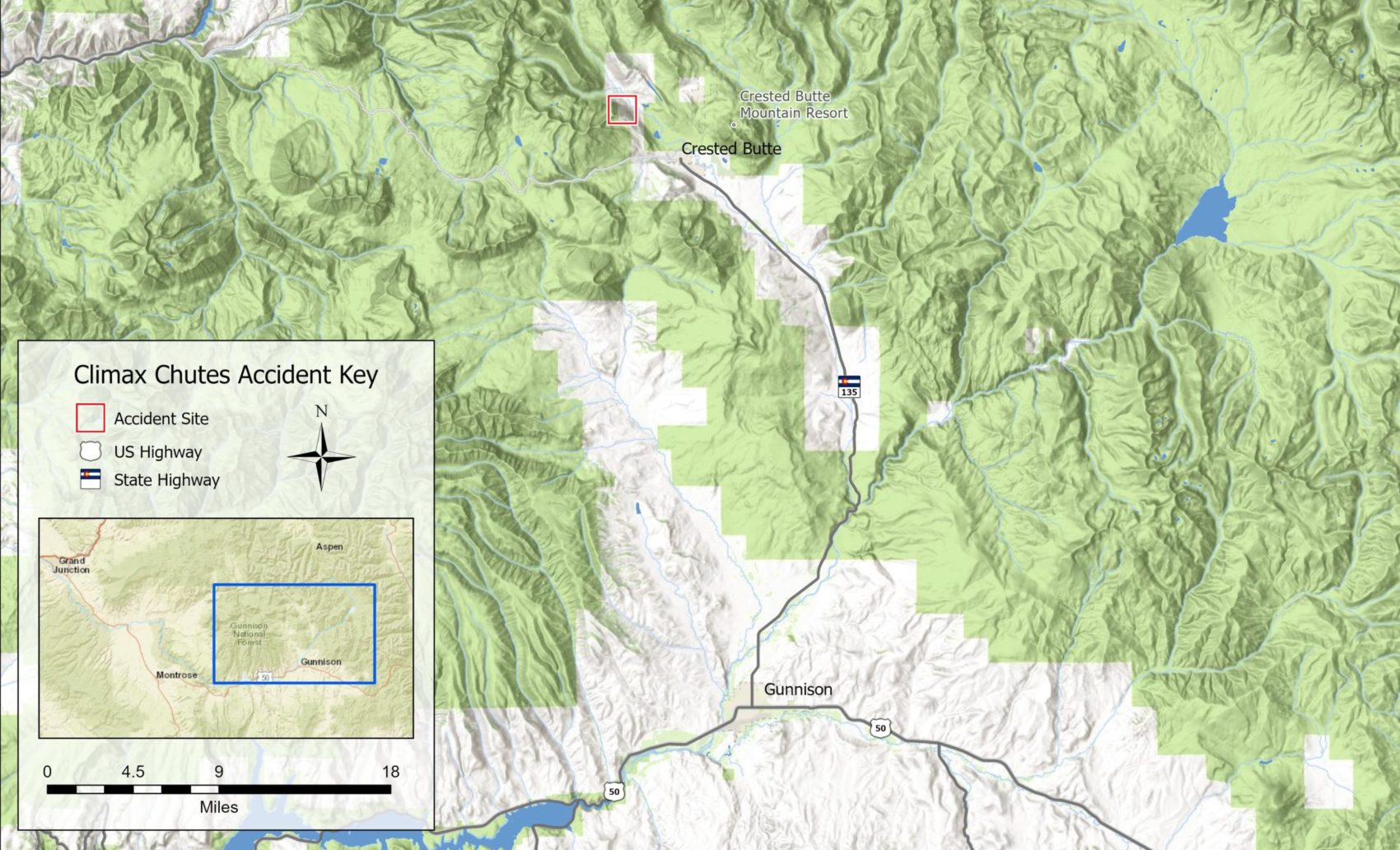
Avalanche Comments
The avalanche began as a wet-loose avalanche triggered by a backcountry skier. The wet-loose avalanche was only a few inches deep, and spread to 150 feet wide at the widest point. It was small relative to the avalanche path, and large enough to bury or injure a person (WL-AS-R1-D2-O). The skier triggered the slide on a northeast-facing slope about 42 degrees in steepness with scattered trees.
The wet-loose avalanche ran over a cliff band and triggered a wet-slab avalanche on the slope below. This avalanche broke down to the ground. This slope had avalanched in early March, so the depth of the snowpack was much shallower than in surrounding areas (two to four feet deep). The wet-slab avalanche was 190 feet wide at the widest point and ran 500 vertical feet. It was small relative to the avalanche path, and large enough to bury or injure a person (WS-AS-R1-D2-G). The slab ran on a densely treed slope about 45 degrees in steepness. The bulk of the slab was composed of clustered rounded snow grains. Meltwater only recently percolated below a melt-freeze crust to reach the rounded grains.
Backcountry Avalanche Forecast
The regional backcountry avalanche forecast for the Central Mountains, issued on the afternoon of April 27, rated the avalanche danger on April 28 as Moderate (Level 2). The Highlights section read:
As the day warms, it will become easier for you to trigger a wet avalanche. Plan to be off and out of the way of steep slopes before they become wet and saturated. If you feel yourself breaking through the more supportive layers about 6-12 inches below the snow surface, it is probably time to call it a day. With increasingly warm temperatures forecast for this week, expect wet avalanches to gouge deeper into the snowpack, becoming larger and more dangerous as the week progresses. Weak layers of facets and depth hoar still exist on a cold, high elevation, north-facing slopes. Carefully assess before committing to these slopes.
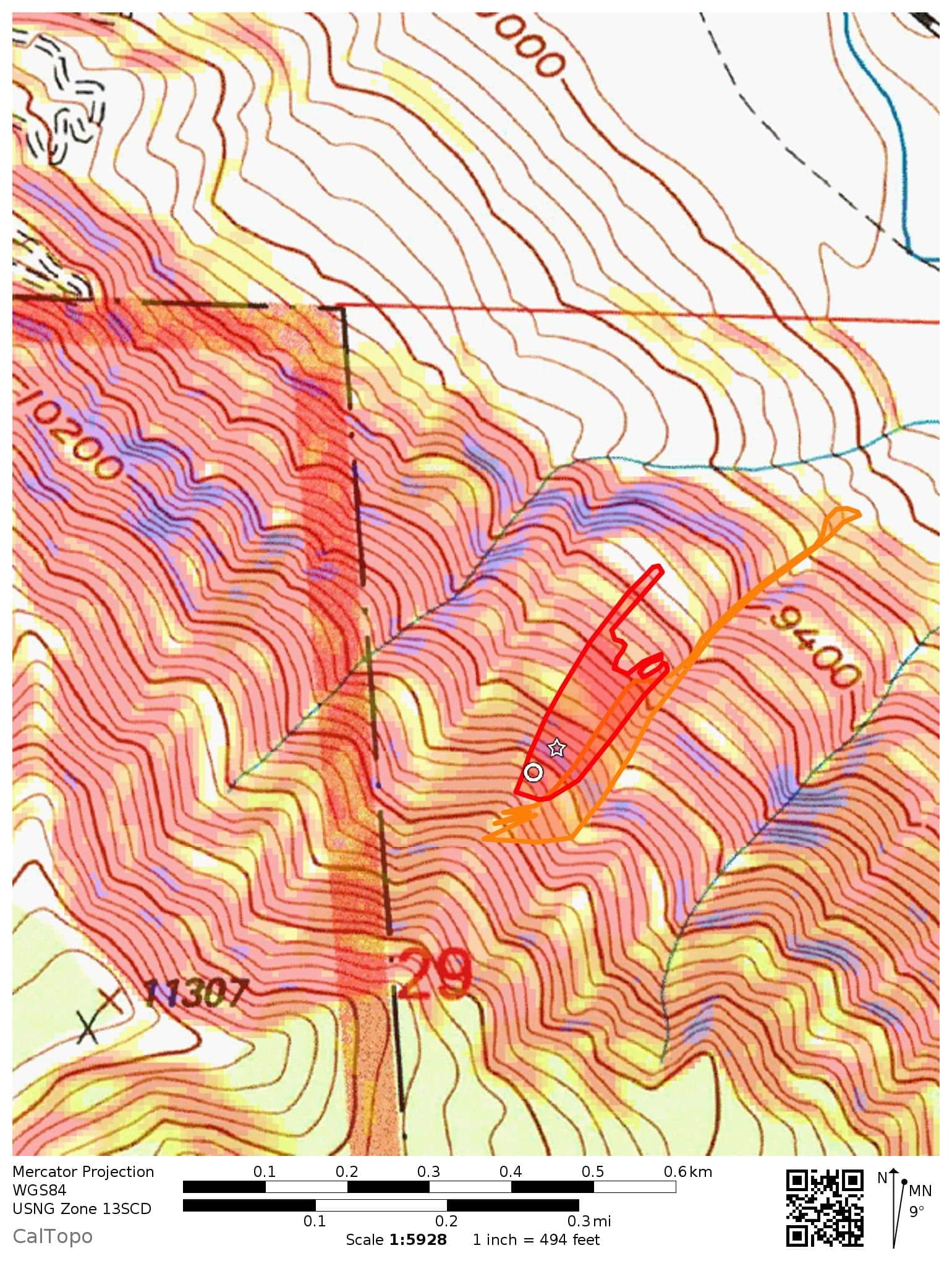
Weather Summary
On April 1, the snow water equivalent (SWE) at the Butte SNOTEL site was 102% of the median (1981-2010). In mid-April a series of storms dropped about 10 inches of snow around the Crested Butte area. The Butte SNOTEL site showed an increase of 0.6 inches SWE between April 19 and 22. Another small storm moved through on April 23, producing just an inch or two of snow.
From April 23 to 27 the days were sunny and warm, with daytime temperatures above freezing. Nighttime low temperatures dropped below freezing. The night of April 27 was the first night temperatures stayed above freezing. The Elkton weather station, located approximately 5 miles north of the accident site and at an elevation of 11,100 feet, recorded a low temperature of 36°F. The air temperature at Elkton at 11:00 AM, around the time of the accident, was 43°F.
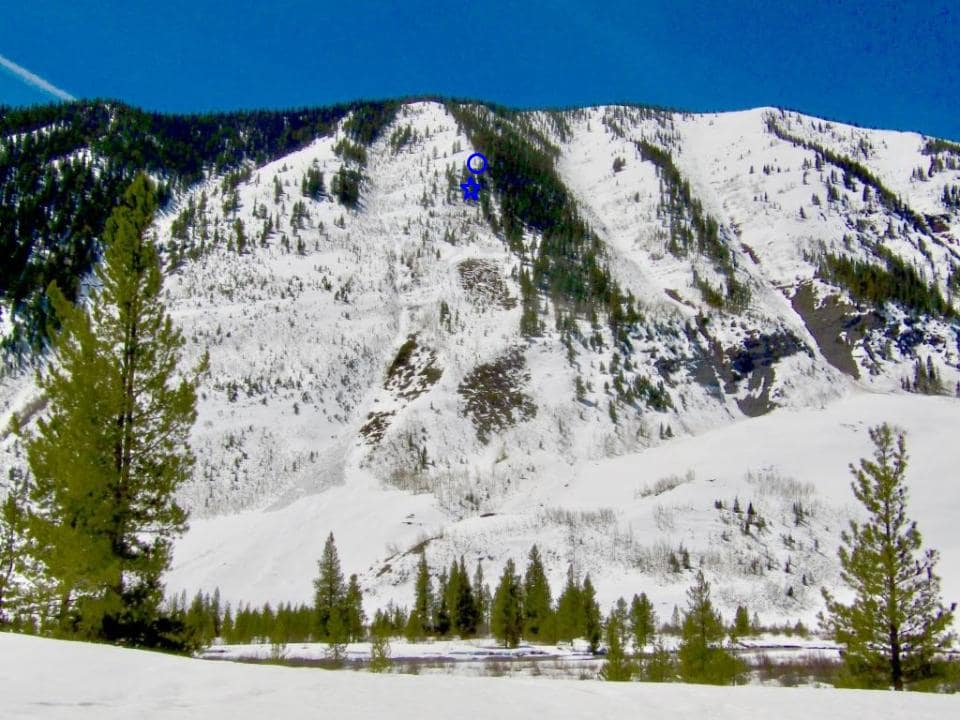
Snowpack Summary
Early season snowfall, followed by dry weather produced a basal layer of faceted snow grains. This weak snow layer was buried as the snowpack slowly increased in depth over the course of the winter. By April the snowpack was stronger in areas around Crested Butte that received more snowfall during the winter, like the crest of the Ruby Range. In areas with less snowfall, like the Climax Chutes, the snowpack remained comparatively weak.
A melt-freeze crust developed on the snowpack surface during the first half of April. A series of storms added about a foot of snow over this crust. With warm weather in the last week of April, the upper snowpack became moist and non-cohesive. Wet-loose avalanches began sliding on the buried melt-freeze crust. As the warm daytime temperatures continued, meltwater in the snowpack began to infiltrate below the crust into dry basal weak layers.
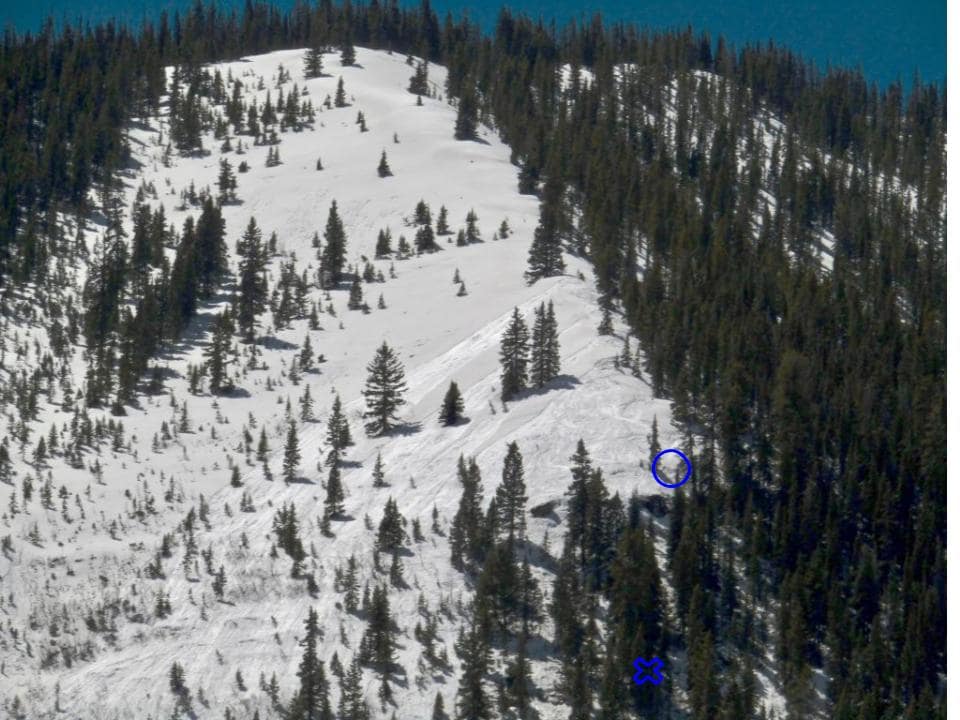
Events Leading to the Avalanche
A group of four backcountry skiers (Skiers 1 through 4) began climbing the southeast flank of Mount Emmons around 8:00 AM. They planned to follow a traverse Skier 1 had made two days prior: ascending the southeast side of Mount Emmons, descending east aspects in Coon Basin, ascending to the northeast ridge of Mount Emmons, and then descending a northeast-facing slope locally known as the Climax Chutes. All four were experienced backcountry tourers. Skier 2 worked as a ski guide, while Skiers 1 and 3 had backcountry skied for 20 or more years. They all carried avalanche rescue equipment (transceiver, probe pole, and shovel). Skier 3 wore an avalanche airbag backpack.
On their ascent, the group noticed the snow had not frozen overnight. They felt some collapsing around 10,000 feet, but the snowpack became more supportable as they ascended to point 12,078 (locally known as Coon Knob). They began descending the prominent east-facing gully in Coon Basin around 9:30 AM. They described conditions as “spring corn,” and did not feel collapsing in the snow during their descent. At the bottom of the descent they discussed the warming conditions and possible alternate routes; then decided to proceed with their initial plans. They climbed to point 11,307 above the Climax Chutes, arriving just before 10:30 AM.
The group expected the avalanche danger to increase as the morning progressed. They descended into the Climax Chutes down a northeast-facing forested slope hoping to find colder, more stable snow. One member of the group described the snow surface on the northeast-facing slope as “sloppy and unsupportive.” After descending the forested slope about 700 vertical feet, Skier 1 traversed down and right to lead the group to a well-defined ridge between two of the Climax Chutes. They regrouped around 10,500 feet in elevation and discussed who would ski the next section first.
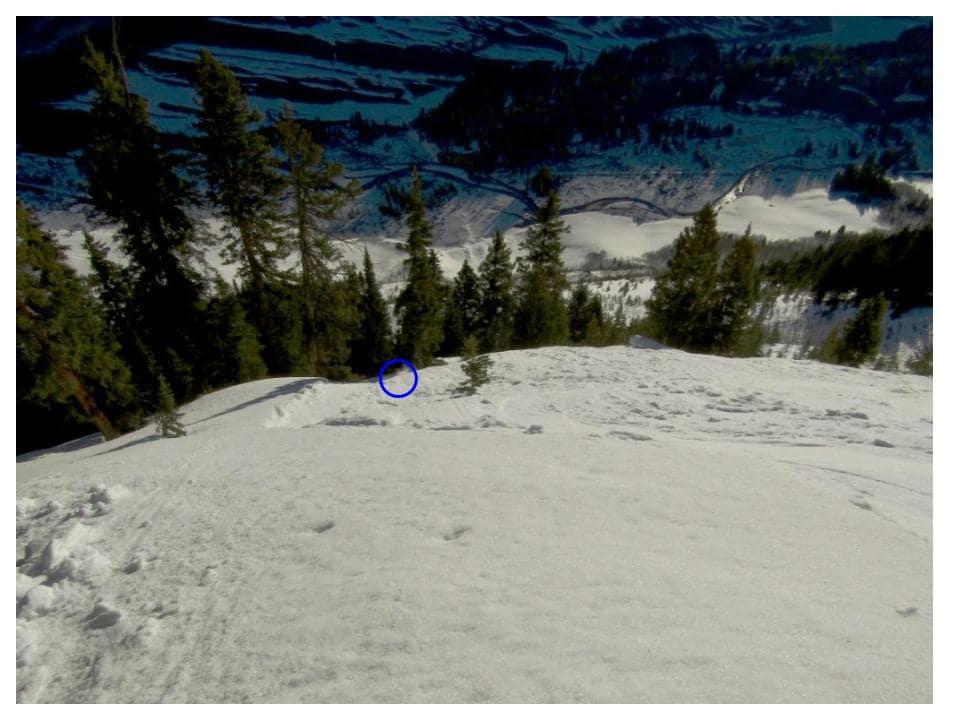
Accident Summary
Skier 1 started his descent along the crest of the ridge. On his first turn, he triggered a five-inch deep, wet-loose avalanche that ran down the east-facing slope to the skier’s right of the ridge. The group watched the shallow, slow-moving avalanche run out of sight. The avalanche ran 1,500 feet down a gully to the valley below. Skier 1 continued down the ridge, triggering several small wet-loose avalanches that ran down the east-facing slope.
Skier 1 continued down the steepening ridgeline and out of sight of the rest of the party. The group waited for a “hoot” or call for the next skier to join him. They only heard the continuing hissing from wet-loose avalanches.
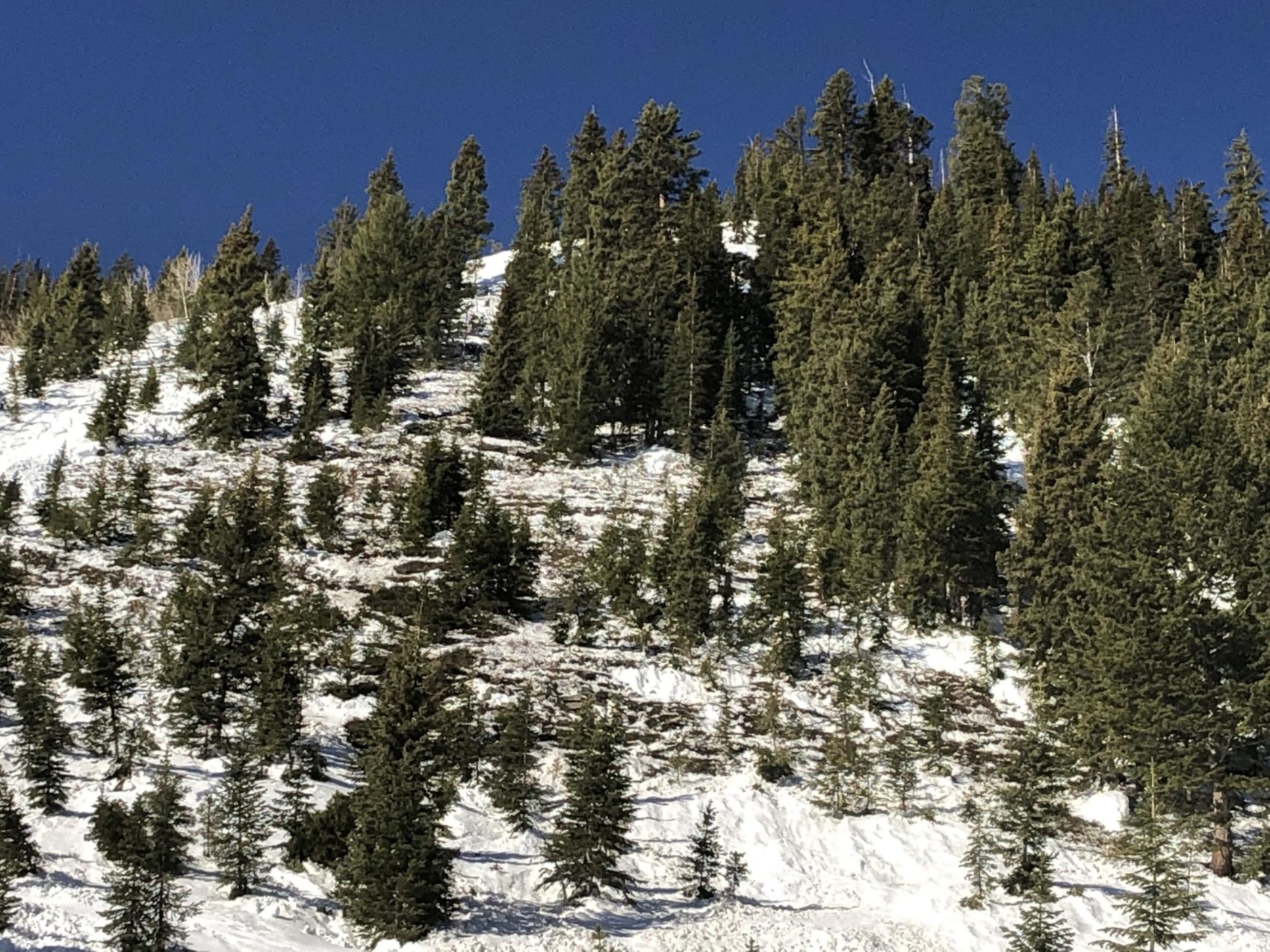
Rescue Summary
After a few minutes with no contact, the group decided to follow Skier 1’s track down the ridge. They followed his tracks into a wet-loose avalanche that ran down and over a cliff band. They reached the top of the cliff without finding him. They switched their transceivers to receive and descended to the skier’s right of the cliff. Skier 2 picked up a transceiver signal at 55 meters. They followed the signal across the slope, initially skiing on the bed surface left by the loose-snow avalanches. As they got closer, they crossed over the flank of a wet-slab avalanche that had removed most of the snow on the slope. The signal led them into a dense stand of trees where they quickly located Skier 1. The avalanches had pinned Skier 1 against a tree, but he was not buried in the debris. The group found him unconscious, pulseless, and not breathing. The group began CPR and called 911.
Rescuers, including members of Crested Butte Mountain Rescue, Crested Butte Fire, and the Colorado Avalanche Information Center assembled at a staging area in the valley bottom. With avalanche danger increasing through the day and medical guidance about Skier 1’s condition, rescuers made the choice to discontinue resuscitation and get the rest of the group out safely. Responders assisted the group out of the backcountry by early afternoon. Skier 1’s body was recovered the following morning.
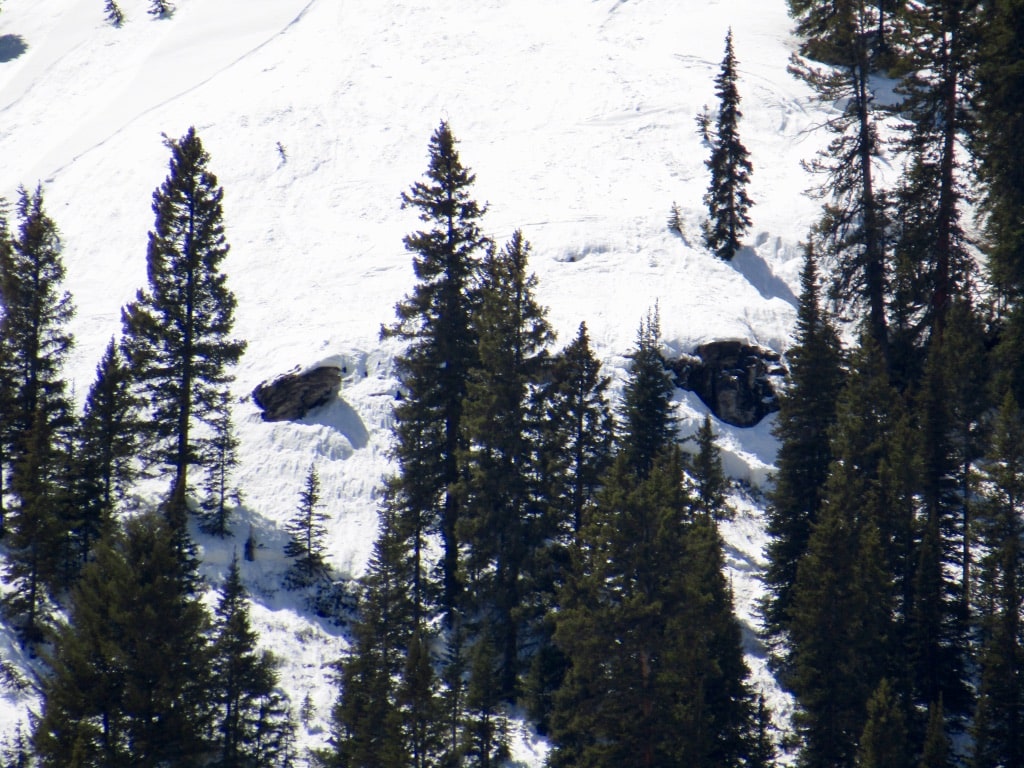
Comments
The group were experienced backcountry travelers and well aware of the worsening avalanche conditions through the morning. Their plan was to minimize their avalanche hazard by descending slopes with a northerly aspect in the Climax Chutes; anticipating a cooler and less avalanche-prone snowpack. When they encountered conditions that were worse than they expected, they moved to a sub-ridge to minimize their exposure to avalanches. Retreat would have been difficult from that location, and they felt they could proceed safely.
They did not expect the wet-loose avalanches to run as far as they did, nor did they expect a loose-snow avalanche to trigger a larger wet-slab avalanche. Skier 1 may have underestimated the size or power of the wet-loose avalanche that caught him and swept him off his feet. The small avalanche carried him over the cliff band, increasing the consequences. Below the cliff band, the loose avalanche triggered a slab avalanche, dramatically magnifying the consequences of the initial avalanche. The cliff band and dense trees further amplified the consequences.
Nighttime temperatures were above freezing at the elevation where these avalanches initiated. The east-facing slope below the ridge had received sun since sunrise. The slope below the cliff band was prime terrain for a wet-slab avalanche. The relatively shallow snowpack meant weaker snow overall and meant meltwater was infiltrating the basal layers sooner than on higher-elevation slopes. The dense trees on the slope below the cliffs likely inhibited any overnight radiational cooling, preventing the snow surface from freezing.
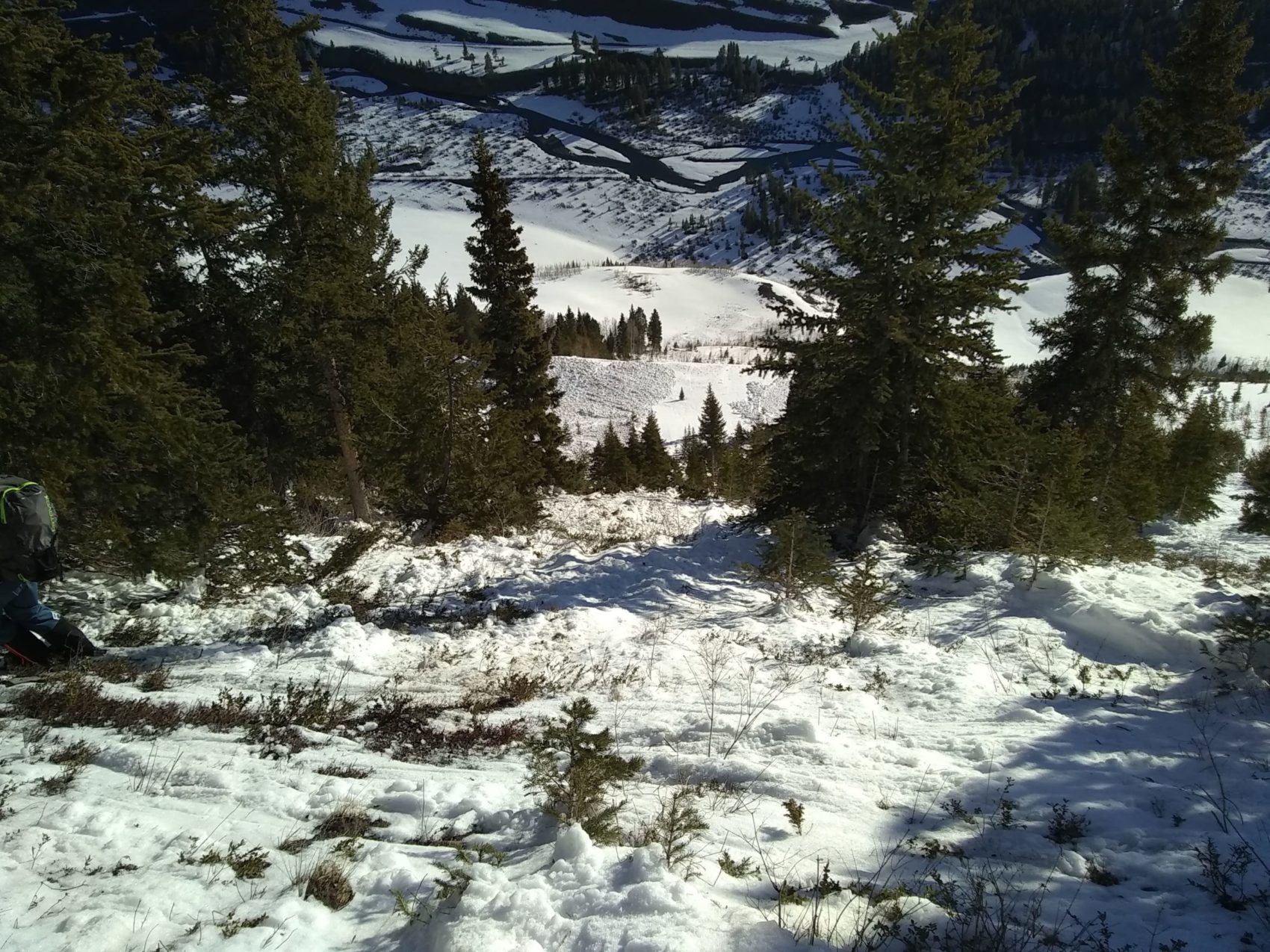
Avalanche Details
- Location: Mount Emmons, west of Crested Butte
- State: Colorado
- Date: 2020/04/28
- Time: 10:45 AM (Estimated)
- Summary Description: 1 backcountry skier caught, killed
- Primary Activity: Backcountry Tourer
- Primary Travel Mode: Ski
- Location Setting: Backcountry
Number
- Caught: 1
- Partially Buried, Non-Critical: 0
- Partially Buried, Critical: 0
- Fully Buried: 0
- Injured: 0
- Killed: 1
Avalanche
- Type: WS
- Trigger: AS – Skier
- Trigger (subcode): u – An unintentional release
- Size – Relative to Path: R1
- Size – Destructive Force: D2
- Sliding Surface: O – Within Old Snow
Site
- Slope Aspect: NE
- Site Elevation: 10300 ft
- Slope Angle: 45 °
- Slope Characteristic: Convex Slope, Sparse Trees, Dense Trees
